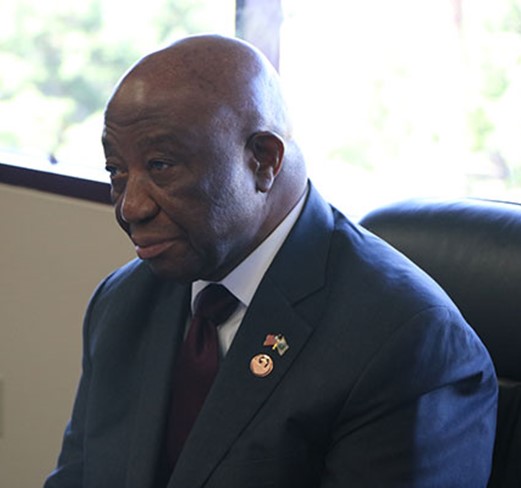Liberia’s economic future appears increasingly promising, with projected growth rates expected to reach 5.8 percent by 2025 and 6.0 percent over the medium term, according to recent reports by the World Bank and International Monetary Fund (IMF).
This anticipated growth is primarily attributed to a surge in mining activities, by mining companies but mainly driven in large part by ArcelorMittal Liberia’s Phase Two Expansion Project.
ArcelorMittal is the largest taxpayer in Liberia and the largest private sector investor, with the highest number of employments since the end of war in Liberia.
The recent economic growth potential forecasted by the IMF takes into account companies like AML’s on-going investments in critical infrastructure—such as railways, port facilities, and the construction of a state-of-the-art ore concentrator in Zolowee, Nimba County. This new investment is helping to pave the way for substantial increases in iron ore production and related economic benefits that can help propel growth.
ArcelorMittal’s Phase Two Expansion is widely expected to bolster Liberia’s mining sector, with projections indicating that iron ore production could double over the medium term and triple by 2030, a commitment to enhancing its operations which is seen as an important driver of national growth.
The company’s investment in the railway from Buchanan to Yekepa, along with upgrades to the Buchanan port, will further support the movement of increased iron ore output, and stimulate job creation, economic growth, and local business activity in the process.
According to the IMF, Liberia’s extractive sector is set to contribute around 30 percent of GDP in the coming years. From this growth, tax revenue, royalties, and social development funds will increase substantially once the expansion is fully operational. These revenue streams will provide the Liberian government with millions of dollars annually, which can be reinvested into critical areas like healthcare, education, and infrastructure.
AML’s Mining expansion will also include a commitment to increased social development funds, which will be allocated to support local communities in mining regions, particularly in Nimba County, Grand Bassa and Bong Counties.
Liberia has maintained an average GDP growth rate of 4.7 percent in 2022—2023, with a moderate acceleration to 5.1 percent expected in 2024. Current high-frequency data suggests that the country’s economic fundamentals are strengthening. Inflationary pressures are easing faster than initially anticipated, with inflation projected to reach 6.6 percent by the end of 2024 and to gradually decline to 4.8 percent by 2027. Stable exchange rates, currently at L$190 per US dollar, are also contributing to favorable economic conditions.
The IMF’s outlook highlights that, beyond mining, growth is expected across various sectors, including agriculture and services, bolstered by improved infrastructure.
Liberia’s economic outlook, bolstered by ArcelorMittal’s substantial Phase Two Expansion and a surge in iron ore production, offers a pathway to increased national income, improved infrastructure, and enhanced public services.
The expected growth in mining will not only drive GDP but also provide the government with crucial funds to invest in social development, fostering a stronger, more inclusive economy.







